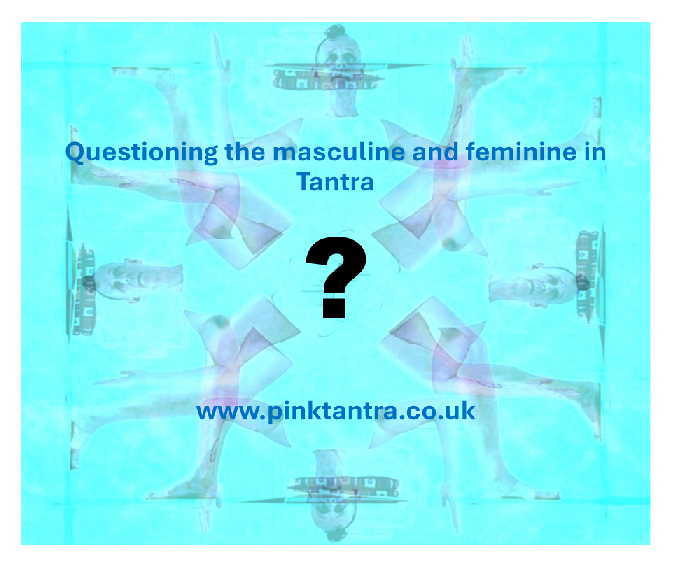Questioning the masculine and feminine in Tantra
The use of the terms masculine and feminine in relation to principles and energy has always been a bone of contention for me. How can energy be gendered? Is this not merely a construct; a way of designating a patriarchal and heteronormative dominant thinking pattern around the union?
 So, do we need to stick with this outdated approach to the language around the concept of union?
So, do we need to stick with this outdated approach to the language around the concept of union?
No, of course not. And indeed Indian tradition gives us the tools needed to shift the language. The union, the interplay which creates the universe, is that of Bindu and Nada. Bindu is the point where all creation begins, and Nada is the original vibration that interacts with Bindu. The offspring of this union is Vayu (that which flows, the wind, prana, or the breath of life).
In Tantra, and especially Kundalini Tantra Yoga, we work with the chakra system. So practically, this union is mirrored in the chakra system, where we integrate and unify the chakras. Chakras one and two (generally known as the Root and Sacral chakras, Muladhara and Svadisthana) ascend once awakened. This is called the Agni principle.
Chakras five and six (generally known as the Throat and 3rd Eye chakras, Visuddha and Agna) descend once awakened. This is called the Soma principle. Agni and Soma come together with Vayu, that is, our life power (will) and the power of love (heart), the awakening of chakras three and four (generally known as the Naval and Heart chakras, Manipura and Anahata) to bring about bliss.
We can think of Agni, Soma and Vayu as the practical coming together of Nada, Bindu and the off-shoot Vayu.
Neither Bindu, Nada, Vayu, nor Agni, Soma or any of the chakras are gendered. To continue to use a gendered approach and gendered language in relation to these aspects is merely a lazy sop to our cultural norms. This in itself stands at odds with the transgressive aspect of Tantra which challenged the cultural norms of the day in ancient India.
One of the key problems with shifting away from a gendered approach is, of course, Tantric artwork around Shiva, Shakti and the various gods and goddesses. However, it should be remembered that these portrayals in themselves where never meant to ‘contain’, but merely act as symbols. And indeed, the more powerful symbols were abstract, the Yantras, which conveyed in visual form the essential vibration, the Mantra.
Bringing it all together
It seems to me that the continued use of gendered language in relation to tantra principles, concepts and energy is unnecessary and outdated. The language hinders, rather than supports, the union we are striving for as we develop our higher consciousness. Gender is an outward facing expression. Tantra and Yoga are about raising our inner awareness and presence.
Connect on Twitter / Instagram / JustFor.Fans
Message me direct if you are interested in mindful, embodied, trauma-informed, or spiritually-informed 1-1 coaching robert.pinktantra@gmail.com
Contact me to join my Pink Tantra Towards Awakening groups for online and in-person workshops around tantra and kundalini yoga practices robert.pinktantra@gmail.com
See my personal development / personality profiling book DISCover the Power of You published through John Hunt Publishing Ltd, 2017. ISBN: 978-1-78535-591-2
And for those who enjoy historical fiction, stories of underrepresented life’s, see my first novel Fermented Spirits published through Austin Macauley Publishers, 2022. ISBN-13: 978-1398437159